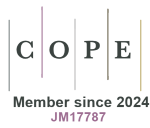Coagulopathy and hemorrhage management in major abdominal surgery
DOI:
https://doi.org/10.33393/ao.2022.2424Keywords:
Abdominal surgery, Blood Coagulation tests, Coagulopathy, Early Goal-Directed Therapy, Hemorrhage, Point-of-Care TestingAbstract
Whilst some guidelines for hemorrhage management during major abdominal surgery have been written, evaluation of the patient’s basal condition remains the headmost factor. Firstly, an assessment to predict perioperative bleeding should be performed, although its prognostic ability is limited as it relies on the patient’s anamnesis and on standardized tests that can have a low predictive accuracy. Upon hemorrhage, monitoring the therapeutic window between hypovolemia and hypervolemia is of crucial importance. According to the guidelines, both a prompt stabilization of cardiac preload and goal-directed fluid therapy (with either colloids or crystalloids) are advised in case of both hypovolemia and hypervolemia. Plasma transfusion, instead, is discouraged for treatment of elevated (mild to moderate) International normalized ratio (INR), as it was shown to have minimal effects and increase the risk of infection. In summary, to define the weak link in the coagulation cascade and the etiopathogenesis of postoperative bleeding is necessary to rely on all available methodologies, such as standardized tests, Point-of-care tests and goal-directed therapies. This review gives an overview of the many factors that are to be monitored during surgical hemorrhage and a summary of the approaches to manage coagulopathy.
References
- Kozek-Langenecker SA, Ahmed AB, Afshari A, et al. Management of severe perioperative bleeding: guidelines from the European Society of Anaesthesiology: First update 2016. Eur J Anaesthesiol. 2017 Jun;34(6):332-395. https://doi.org/10.1097/eja.0000000000000630 PMID: 28459785 DOI: https://doi.org/10.1097/EJA.0000000000000630
- Bonhomme F, Ajzenberg N, Schved JF, et al. Pre-interventional haemostatic assessment: Guidelines from the French Society of Anaesthesia and Intensive Care. Eur J Anaesthesiol. 2013 Apr;30(4):142-62. https://doi.org/10.1097/eja.0b013e32835f66cd PMID: 23435255 DOI: https://doi.org/10.1097/EJA.0b013e32835f66cd
- Raghunathan K, McGee WT, Higgins T. Importance of intravenous fluid dose and composition in surgical ICU patients. Curr Opin Crit Care. 2012;18(4):350-357. https://doi.org/10.1097/MCC.0b013e328355598c PMID:22732434 DOI: https://doi.org/10.1097/MCC.0b013e328355598c
- Coats TJ, Brazil E, Heron M. The effects of commonly used resuscitation fluids on whole blood coagulation. Emerg Med J. 2006;23(7):546-549. https://doi.org/10.1136/emj.2005.032334PMID:16794099 DOI: https://doi.org/10.1136/emj.2005.032334
- Stanworth SJ, Grant-Casey J, Lowe D, et al. The use of fresh-frozen plasma in England: high levels of inappropriate use in adults and children. Transfusion. 2011;51(1):62-70. https://doi.org/10.1111/j.1537-2995.2010.02798.x PMID:20804532 DOI: https://doi.org/10.1111/j.1537-2995.2010.02798.x
- Sarani B, Dunkman WJ, Dean L, Sonnad S, Rohrbach JI, Gracias VH. Transfusion of fresh frozen plasma in critically ill surgical patients is associated with an increased risk of infection. Crit Care Med. 2008;36(4):1114-1118. https://doi.org/10.1097/CCM.0b013e318168f89dPMID:18379235 DOI: https://doi.org/10.1097/CCM.0b013e318168f89d
- Marinho DS. Perioperative hyperfibrinolysis - physiology and pathophysiology. Braz J Anesthesiol. 2021;71(1):65-75. English Edition. https://doi.org/10.1016/j.bjane.2020.12.007PMID:33712256 DOI: https://doi.org/10.1016/j.bjane.2020.12.007
- Klaassen RA, Selles CA, van den Berg JW, Poelman MM, van der Harst E. Tranexamic acid therapy for postoperative bleeding after bariatric surgery. BMC Obes. 2018;5(1):36. https://doi.org/10.1186/s40608-018-0213-5 PMID:30524741 DOI: https://doi.org/10.1186/s40608-018-0213-5
- Wikkelsø A, Wetterslev J, Møller AM, Afshari A. Thromboelastography (TEG) or thromboelastometry (ROTEM) to monitor haemostatic treatment versus usual care in adults or children with bleeding. Cochrane Database Syst Rev. 2016;(8):CD007871-CD007871. https://doi.org/10.1002/14651858.CD007871.pub3 PMID:27552162 DOI: https://doi.org/10.1002/14651858.CD007871.pub3
- Rodrigues A, Carrilho A, Almeida N, et al. Interventional Algorithm in Gastrointestinal Bleeding-An Expert Consensus Multimodal Approach Based on a Multidisciplinary Team. Clin Appl Thromb Hemost. 2020;26:1076029620931943. https://doi.org/10.1177/1076029620931943PMID:32584602 DOI: https://doi.org/10.1177/1076029620931943









